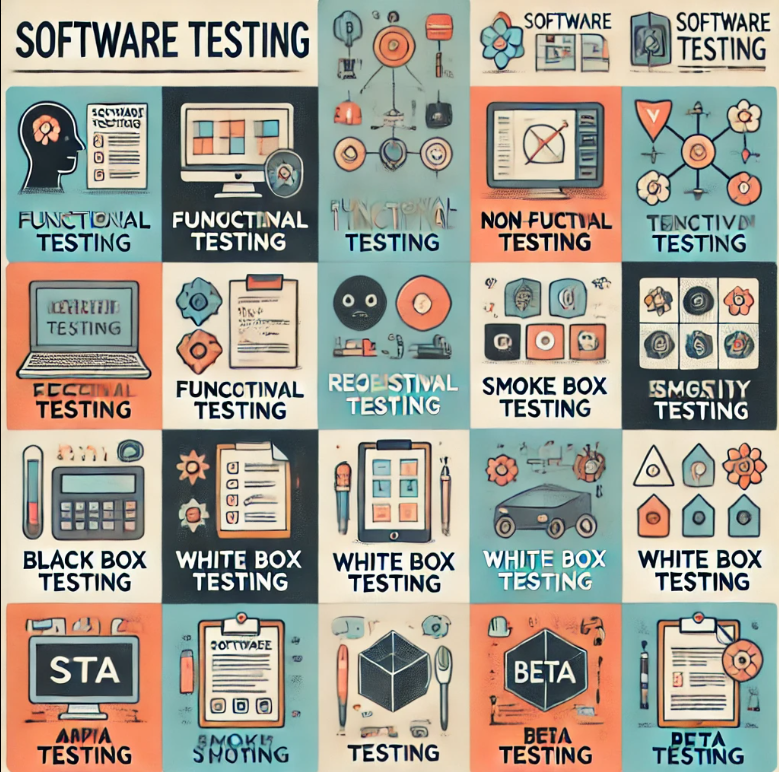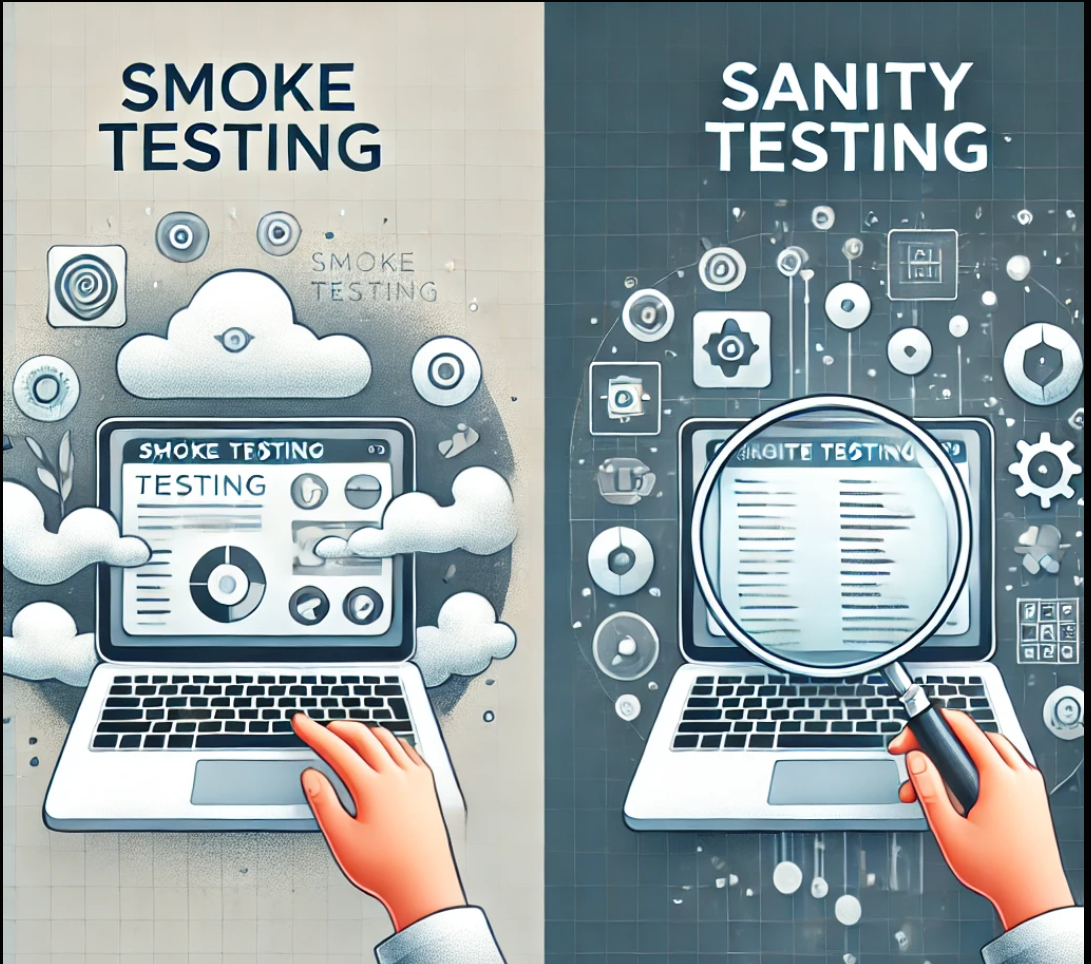
In software development, different types of testing help ensure that the software works as intended and meets user requirements. Testing is essential for delivering a high-quality product. Let’s explore some major types of testing, with examples, in simple language for better understanding.
1. Functional Testing
Definition: Functional testing is used to check if the software’s features work according to the specified requirements. This testing focuses on what the system does, not how it does it.
Example: Imagine a shopping app where a customer needs to place an order. Functional testing would check if all functions related to order placement work correctly, such as adding items to the cart, applying discounts, entering payment details, and placing the order. Testers check each function individually to make sure everything works as expected.
2. Non-Functional Testing
Definition: Non-functional testing checks aspects that don’t directly affect functionality but impact the software’s user experience, such as performance, security, and usability.
Example: For a banking app, non-functional testing would check if the app loads within a reasonable time, even during peak hours when many users are online. Testers also evaluate if the app maintains security standards to protect user data, which is crucial for a bank.
3. Regression Testing
Definition: Regression testing is performed after making changes or updates to the software to ensure that previously working features still work as they should.
Example: Let’s say the developers add a new feature to the music app allowing users to create playlists. Regression testing checks if adding this new feature has affected existing features like playing, pausing, or downloading songs. Testers will run the old test cases to verify that the new feature hasn’t introduced any bugs in the old functions.
4. Smoke Testing
Definition: Smoke testing is a quick test to check if the basic features of the software are working fine after a new build. This test is done before moving the software to more detailed testing.
Example: In a food delivery app, smoke testing would quickly check if basic features like opening the app, searching for restaurants, and placing an order are working. If these basic functions fail, there’s no point in proceeding to further testing. Smoke testing helps in saving time by catching major issues early.
5. Sanity Testing
Definition: Sanity testing is a quick check to verify if a specific feature or bug fix is working correctly. It’s done after making minor changes to ensure that specific functionality works fine.
Example: Suppose there was a bug in a cab booking app’s payment process, and it’s been fixed. Sanity testing would check if the payment process works fine after the fix. This type of testing doesn’t go into other parts of the app but only checks if the recent changes work properly.
6. Black Box Testing
Definition: Black box testing is done without looking at the internal code or structure of the software. Testers only check if the software behaves as expected based on its requirements.
Example: In an online exam app, testers could use black box testing to ensure the app correctly accepts and submits answers. The testers don’t look at the app’s code but focus on the input-output—whether users’ answers are recorded and stored correctly in the backend database.
7. White Box Testing
Definition: White box testing, also known as structural testing, is where testers examine the internal code and logic of the software. It requires knowledge of programming.
Example: In a calculator app, white box testing would involve checking each code block to ensure every calculation is performed accurately. For instance, if there’s a function for addition, white box testing will confirm that the function works correctly by reviewing the code’s logic.
8. Alpha Testing
Definition: Alpha testing is the first stage of user acceptance testing, done by internal employees or a limited user group. This testing happens before releasing the product to real users to catch bugs that were missed during earlier testing.
Example: For a new photo-editing app, the development team and internal staff will use the app in an alpha testing phase. They will check features like filters, cropping, and brightness adjustments to see if they work as expected. They can report any issues to the development team for correction.
9. Beta Testing
Definition: Beta testing is performed after alpha testing but before the final release. A larger user group, often real customers, tests the software in real-world conditions to provide feedback and report any bugs.
Example: Continuing with the photo-editing app example, after alpha testing is done, the app might be released to a limited group of actual users for beta testing. They would use the app normally and report any problems they encounter. The feedback helps developers fix any remaining bugs before the full public release.
|
Type of Testing |
Focus |
Example |
|
|
Functional Testing |
Verifying specific functions |
Checking order placement in a shopping app |
|
|
Non-Functional Testing |
Quality aspects like performance |
Checking load time and security in a banking app |
|
|
Regression Testing |
Checking new changes haven’t broken old features |
Testing older features after adding a new playlist feature in a music app |
|
|
Smoke Testing |
Basic health check of main functions |
Checking main features of a food delivery app after a new build |
|
|
Sanity Testing |
Checking recent bug fix or minor feature |
Testing payment process after fixing a payment bug in a cab booking app |
|
|
Black Box Testing |
Input-output behavior without seeing code |
Ensuring correct answer submission in an online exam app |
|
|
White Box Testing |
Code and logic verification |
Checking calculation code in a calculator app |
|
|
Alpha Testing |
First stage of user testing by internal team |
Testing photo-editing features within the company |
|
|
Beta Testing |
Testing by real users in real-world environment |
Testing photo-editing features by a small group of real users |
|
we will be covering each type in details in future articles.
Happy Testing!

